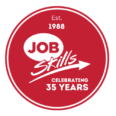
Mastering Business Finances for Canadian Entrepreneurs
Managing cash flow, expenses, and ensuring profitability is a challenge every business owner faces. For Canadian business owners, these financial aspects are crucial to maintaining a successful and sustainable business. In this blog post, we’ll provide practical tips and solutions to help you manage these financial elements effectively. By the end, you’ll have a better understanding of how to keep your business’s finances in check and ensure long-term profitability.
Understanding Cash Flow
What is Cash Flow?
Cash flow is the movement of money into and out of your business. It represents the company’s ability to generate income and pay its bills. Positive cash flow means more money is coming in than going out, which is essential for maintaining business operations and growth. Negative cash flow, on the other hand, can lead to financial difficulties and potentially jeopardize your business’s future.
Common Cash Flow Problems
Many businesses face cash flow challenges, such as late payments from customers or high operating expenses. These issues can disrupt your business operations and make it difficult to cover essential costs. For instance, if clients delay payments, you may struggle to pay suppliers or employees on time. High expenses can also eat into your profits, leaving little room for growth and investment.
Identifying these common cash flow problems is the first step in addressing them. By understanding the root causes, you can implement strategies to improve your cash flow and ensure your business remains financially healthy.
Solutions for Keeping Track of Cash Flow
Create a Cash Flow Statement
A cash flow statement is a financial document that tracks the inflow and outflow of cash within your business. It provides a clear picture of your company’s financial health and helps you make informed decisions. To create a cash flow statement, follow these steps:
- Record all cash inflows, such as sales revenue and loans.
- Record all cash outflows, including expenses like rent, utilities, and salaries.
- Calculate the net cash flow by subtracting total outflows from total inflows.
- Review the statement regularly to identify trends and areas for improvement.
Maintaining a cash flow statement allows you to monitor your business’s financial performance and take proactive measures to address any issues.
Implement Cash Flow Forecasting
Cash flow forecasting involves predicting your business’s future cash inflows and outflows. This helps you anticipate potential cash flow problems and plan accordingly. Accurate forecasting can prevent financial crises and ensure you always have enough cash on hand to cover expenses.
To forecast cash flow, use tools like spreadsheets or specialized software. Input your historical financial data and adjust for anticipated changes, such as seasonal fluctuations or new expenses. Regularly update your forecast to reflect actual performance and refine your predictions over time.
Improve Invoicing Practices
Efficient invoicing practices can significantly improve your cash flow by ensuring timely payments from customers. Here are some tips for faster invoicing and payment collection:
- Send invoices promptly after delivering goods or services.
- Clearly outline payment terms and due dates on each invoice.
- Use invoicing software to automate the process and minimize errors.
- Follow up with customers who miss payment deadlines.
By streamlining your invoicing practices, you can reduce the time it takes to receive payments and maintain a healthier cash flow.
Maintain a Cash Reserve
Having a cash reserve provides a financial cushion for your business during tough times. It allows you to cover unexpected expenses or temporary cash flow shortages without resorting to loans or credit. To build and manage a cash reserve:
- Set aside a portion of your profits each month.
- Aim to accumulate enough to cover at least three to six months of operating expenses.
- Keep your reserve in a separate account to avoid dipping into it for non-emergencies.
A well-maintained cash reserve can provide peace of mind and financial stability for your business.
Managing Expenses Effectively
Identify and Categorize Expenses
Understanding your business expenses is crucial for effective financial management. Start by identifying different types of expenses, such as fixed and variable costs. Fixed expenses remain constant, like rent and salaries, while variable expenses fluctuate with production levels, like raw materials and utilities.
Categorize your expenses to track and analyze them effectively. Common categories include:
- Operational expenses (e.g., rent, utilities)
- Administrative expenses (e.g., office supplies, software)
- Marketing expenses (e.g., advertising, promotions)
By categorizing your expenses, you can identify areas where you can cut costs and improve efficiency.
Create and Stick to a Budget
A budget is a financial plan that outlines your expected income and expenses. It helps you allocate resources, control spending, and ensure you have enough funds to cover essential costs. To create a realistic budget:
- List all sources of income and their estimated amounts.
- List all expenses, both fixed and variable, and their estimated amounts.
- Subtract total expenses from total income to determine your budget surplus or deficit.
Stick to your budget by regularly reviewing your spending, making adjustments as needed, and avoiding unnecessary expenses.
Regularly Review and Adjust Expenses
Regularly reviewing and adjusting your expenses ensures that your business remains financially healthy. Use tools like spreadsheets or accounting software to track your spending and compare it to your budget. Identify areas where you can cut costs or reallocate resources for better efficiency.
Make it a habit to review your expenses monthly or quarterly. Look for trends, such as rising costs or declining revenue, and take corrective action to maintain financial stability.
Negotiate with Suppliers and Vendors
Negotiating better terms with suppliers and vendors can help you reduce costs and improve your cash flow. Here are some tips for successful negotiations:
- Research market rates and competitor pricing to strengthen your position.
- Build strong relationships with suppliers and communicate your needs clearly.
- Offer to sign longer-term contracts in exchange for discounts or better terms.
By negotiating effectively, you can secure more favorable terms and minimize your expenses.
Ensuring Profitability
Set Profitability Goals
Setting clear profitability goals helps you focus on achieving financial success. These goals should be specific, measurable, attainable, relevant, and time-bound (SMART). To set and track profitability goals:
- Determine your desired profit margin and set targets for revenue and expenses.
- Break down your goals into smaller, manageable tasks.
- Monitor your progress regularly and adjust your strategies as needed.
Having well-defined profitability goals keeps you motivated and focused on achieving long-term financial success.
Monitor Key Performance Indicators (KPIs)
Key performance indicators (KPIs) are metrics that help you track your business’s performance and profitability. Common KPIs include:
- Gross profit margin
- Net profit margin
- Return on investment (ROI)
- Customer acquisition cost (CAC)
Regularly monitoring these KPIs allows you to identify areas for improvement and make data-driven decisions to enhance your business’s profitability.
Price Your Products/Services Correctly
Pricing your products or services correctly is crucial for maintaining profitability. Consider factors like production costs, market demand, and competitor pricing when setting your prices. Conduct market research to understand your target audience’s willingness to pay and adjust your pricing strategy accordingly.
Experiment with different pricing models, such as cost-plus pricing or value-based pricing, to find the best approach for your business. Regularly review your pricing strategy to ensure it remains competitive and profitable.
Control Costs Without Sacrificing Quality
Reducing costs without compromising quality is essential for maintaining profitability. Identify areas where you can cut costs, such as:
- Streamlining processes and eliminating inefficiencies
- Reducing waste and optimizing resource usage
- Leveraging technology to automate tasks and improve productivity
Implement cost-saving measures while maintaining high standards for your products or services. This ensures that your customers continue to receive value and remain loyal to your brand.
Tools and Resources
Accounting Software
Using accounting software can simplify cash flow and expense management. Popular options include QuickBooks, Xero, and FreshBooks. These tools offer features like:
- Automated invoicing and payment reminders
- Expense tracking and categorization
- Financial reporting and analysis
Investing in accounting software can save you time and improve your financial management practices.
Financial Advisors and Accountants
Seeking professional help from financial advisors and accountants can provide valuable insights and guidance. They can assist with tasks like:
- Creating and maintaining financial statements
- Developing budgeting and forecasting strategies
- Identifying tax-saving opportunities
Engaging with financial professionals can help you make informed decisions and ensure your business’s financial health.
Educational Resources
Continuing your education in financial management is crucial for staying informed and making better decisions. Consider resources like:
- Books and online courses on financial management
- Webinars and workshops by industry experts
- Government programs and support for Canadian business owners
Staying updated on financial management best practices can help you improve your skills and keep your business on the path to success.
Managing cash flow, expenses, and profitability is essential for the success of any business. By implementing the solutions and strategies outlined in this blog post, Canadian business owners can ensure their businesses remain financially healthy and sustainable.
Remember, ongoing financial management is crucial for long-term success. Continuously monitor your cash flow, review your expenses, and set clear profitability goals. By doing so, you’ll be well-equipped to navigate the challenges of running a business and achieve lasting financial success.
Ready to take control of your business’s finances? Start implementing these strategies today and watch your business thrive!

Job Skills, a non-profit charitable community-based employment, and training organization has successfully delivered innovative programming for 35+ years across the Greater Toronto Area (GTA) and neighbouring regions. Since 1998 Job Skills has helped 4,800+ aspiring entrepreneurs plan and launch their businesses, including 1,700+ youth entrepreneurs. Job Skills continues their support and commitment to the success of the business community, engaging with 3000+ businesses across the GTA, assisting with recruitment, retention, and training services.
Job Skills’ employment specialists are there to answer any of your employment questions. Job Skills‘ staff offer solutions to all job seekers, including youth, newcomers, mature workers, persons with disabilities, and entrepreneurs. Job Skills’ knowledgeable team can help you make educated decisions, set goals, and create a strategy to help you become happier in your career. Job Skills works with local employers creating employment opportunities for Job Skills’ clients.
Thanks to government funding, Job Skills’ programs and services are free to all users. Job Skills have locations across Keswick, Stouffville, Markham, Brampton, and Mississauga. Job Skills also offers virtual services for community members unable to attend one of our offices for in-person activities.
Find your employment solution today. Visit www.jobskills.org

